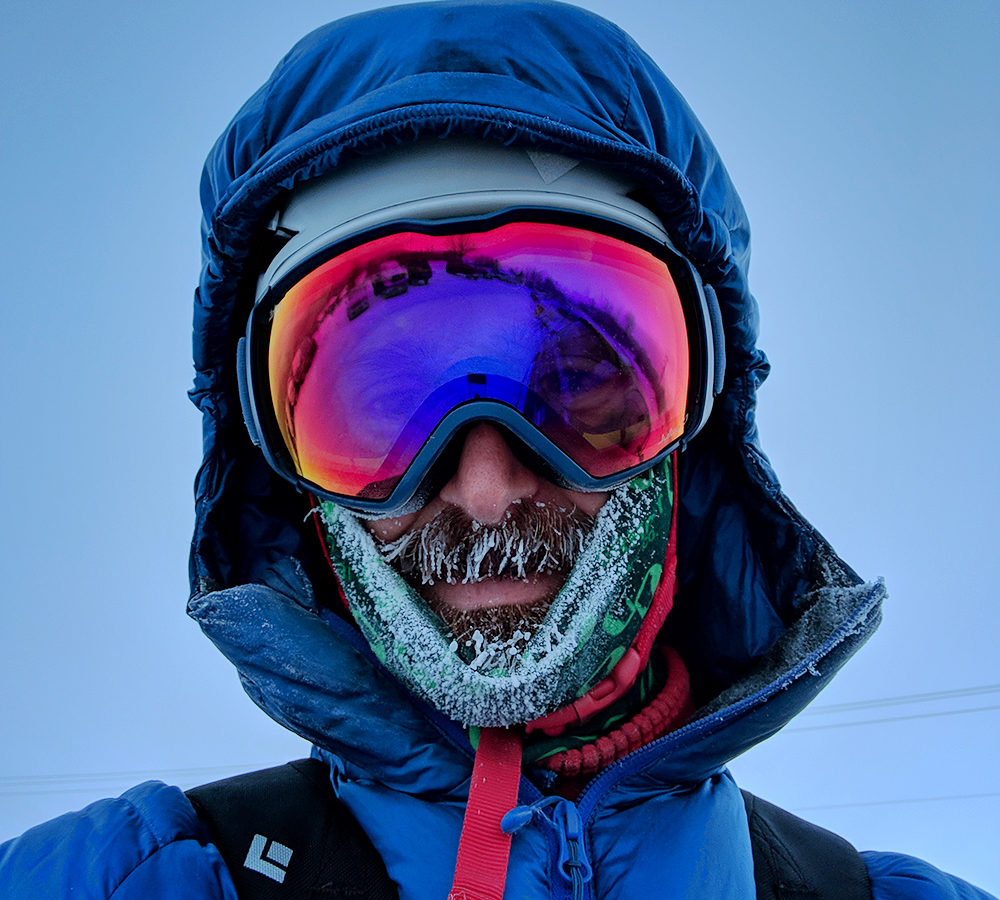
When car thermometers start reading in the single digits, even driving to the nearest trailhead seems daunting — let alone gearing up for a day in the woods. Since cold weather is settling in around the Green Mountains and the weekend forecast is expected to have long sub-zero stretches, we at the Catamount Trail Association figured now was a good time to talk about what it takes to stay warm, comfortable, and safe while backcountry skiing when the mercury plummets.
Any longtime backcountry skier knows that frigid times can be beautiful as well — from sparkling bluebird days in the negative digits to the crunch of styrofoam snow during a finger-freezing early-morning start. But before you head out for a midwinter schuss on the Catamount Trail or beyond, ask yourself what you’re attempting and what extra gear you might pack to supplement your usual kit. Are you using lifts to access backcountry terrain, or are you skinning up yourself? Will you be doing multiple laps? How will you keep your skins dry and sticky? How long might you be out if unconsolidated snow makes the going slow? If you’re going along rolling terrain, will it be protected from the wind or exposed to it?

During deep-cold, midwinter days, there are several layers that you might consider putting in your pack that wouldn’t be relevant to more mild, late-winter tours. For one thing, an extra-puffy down or synthetic jacket is a must for extreme cold. Not only does it function to seal in heat during snack and lunch stops, but it also becomes a safety matter in case you need to stop for an extended, unanticipated period. This layer can be sized to fit over all the other ones so that you don’t have to disrobe to put the jacket on. Meanwhile, on the bottom, consider wearing a pair of wind-stopping hardshell pants made of Gore-Tex or a similar material. While tights or softshell pants might cut it during normal weather, water- and windproof trousers will be the best bet at the low end of the temperature spectrum
Standard-issue ski touring accessories, such as gaiters and waterproof gloves, become especially important when the goal is to keep out all snow and moisture. Veteran backcountry skiers advise that skiers bring extra layers for the hands, feet, and head — areas where moisture collects. An extra pair of ski socks, liner gloves, and a dry fleece hat don’t weigh very much, and could make a significant difference between a comfortable end to the day and a miserable, bone-chilling one. Another item to bring in extra quantities, as modeled by Greg above, is the humble Buff. You can use a Buff as neck-warmer, headband, or for many purposes. Stay stylish with a CTA logo buff!
One issue with warmth during cold ski tours has to do with feet and boots. While it might seem like a good idea to wear thicker socks or double up on a cold day, this can actually backfire. A well-fitted boot allows the foot room to move and gives it good circulation, but only if the skier wearing them has appropriately-thick socks. Thicker socks constrict circulation, limiting blood flow and making the feet colder on the whole. So, instead of thicker socks, consider using commercially-available heat packs that stick onto your insoles and keep your feet warm throughout the day. Or consider buying neoprene overboots for your touring setup.
Safety equipment, such as a foam pad and a lightweight Mylar space blanket, may seem like a chore to bring during spring tours. But anything can happen at any time, and severe cold exacerbates even small mistakes and short hold-ups. Consider carrying a full-length sleeping pad and a sleeping bag in case of an extended period of staying still.
With all the new snow coming to the Green Mountain State over the past few weeks, it’s hard to stay inside for too long. But when you’re packing for your next backcountry excursion, following a few basic rules can help keep you warm, dry, safe, and stoked!










